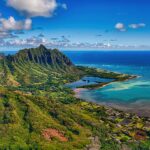Human beings have always been fascinated by speed and the pursuit of pushing the limits of our physical abilities. In the realm of running, there have been remarkable individuals who have shattered records and achieved extraordinary speeds. In this blog post, we will explore the fastest runner on Earth, examining the factors that contribute to their incredible speed, the records they have set, and the remarkable feats they have accomplished.
I. The Human Body and Running:
- Anatomy and Physiology: The human body is uniquely designed for running, with adaptations such as long legs, elastic tendons, and a complex musculoskeletal system that allows for efficient energy transfer.
- Biomechanics: The biomechanics of running, including stride length, stride frequency, and ground contact time, play a crucial role in determining running speed.
II. Record-Breaking Runners:
- Usain Bolt: Usain Bolt, from Jamaica, is widely regarded as the fastest man in history. He holds the world records for the 100 meters (9.58 seconds) and 200 meters (19.19 seconds), achieved at the 2009 World Athletics Championships in Berlin.
- Florence Griffith-Joyner: Florence Griffith-Joyner, also known as Flo-Jo, set the world record for the women’s 100 meters (10.49 seconds) and 200 meters (21.34 seconds) in 1988. Her records still stand today.
- Eliud Kipchoge: Eliud Kipchoge, a Kenyan long-distance runner, made history by breaking the two-hour barrier in the marathon with a time of 1:59:40 in the INEOS 1:59 Challenge in 2019.
- Shelly-Ann Fraser-Pryce: Shelly-Ann Fraser-Pryce, from Jamaica, is a multiple Olympic and World Championships gold medalist. She holds the women’s world record for the 100 meters in 10.63 seconds, set in 2021.
III. Factors Affecting Speed:
- Genetics: Genetic factors, such as muscle fiber composition, body proportions, and metabolic efficiency, can influence an individual’s speed potential.
- Training and Conditioning: Proper training, including speed workouts, strength training, and endurance exercises, is crucial for improving running speed.
- Technique and Form: Efficient running mechanics, including arm swing, stride length, and foot strike, can contribute to faster running speeds.
- Equipment and Technology: Advances in running shoes, clothing, and track surfaces have played a role in improving athletes’ performance and reducing drag.
IV. Pushing the Limits:
- Breaking Barriers: Athletes continue to push the boundaries of human speed, aiming to break records and achieve new milestones.
- Future Possibilities: As technology and our understanding of human performance advance, it is possible that new records will be set and even faster speeds will be achieved.
Conclusion: The pursuit of speed in running has led to remarkable achievements and record-breaking performances. From Usain Bolt’s lightning-fast sprints to Eliud Kipchoge’s groundbreaking sub-two-hour marathon, these individuals have demonstrated the extraordinary capabilities of the human body. As we continue to explore the limits of human speed, we can only wonder what new feats will be accomplished in the future.



















Add Comment